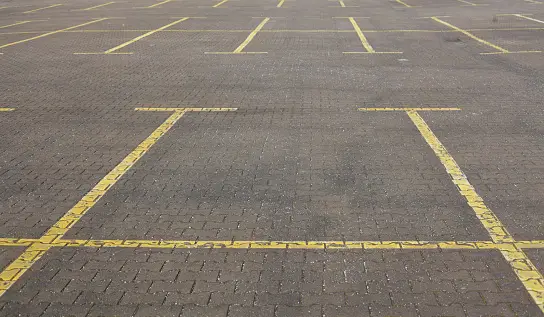Key Takeaways
- Understanding different paving materials helps make better parking lot construction and maintenance decisions.
- Sustainable paving options can reduce environmental impact and enhance durability.
- Proper installation techniques and maintenance practices extend the lifespan of paved surfaces.
Table of Contents
- The Importance of Choosing the Right Material
- Asphalt vs. Concrete: Pros and Cons
- Sustainable Paving Options
- Proper Installation Techniques
- Maintenance Tips for Longevity
- Cost Considerations and Budgeting
- Case Studies on Successful Paving Projects
The Importance of Choosing the Right Material
When planning a parking lot paving project, selecting the appropriate material is crucial. The right choice ensures the parking area’s longevity, safety, and aesthetic appeal. For instance, working with experienced contractors from K&E Flatwork can help determine the most suitable materials for your project’s needs. Climate, expected traffic, and maintenance needs are significant in this decision.
Moreover, understanding these factors aids in making informed choices that can save costs in the long run. A parking lot constructed with high-quality materials will likely require fewer repairs and less maintenance, providing a more even and secure surface for vehicles and pedestrians. Additionally, choosing suitable materials can enhance the property’s visual appeal, making it more inviting for visitors and increasing its overall value.
Asphalt vs. Concrete: Pros and Cons
Asphalt and concrete are two of the most common paving materials. Each has advantages and disadvantages, which can help you make an informed decision.
Asphalt
Asphalt is a popular choice due to its cost-effectiveness and quick installation process. It can be driven on shortly after being laid, which reduces downtime. Its dark color also helps melt snow faster in cold climates, reducing the risk of ice formation. However, asphalt may require more frequent maintenance and resealing than concrete. Cracks can develop in regions with significant temperature fluctuations, necessitating periodic repairs.
Concrete
While more expensive initially, concrete tends to be more durable and long-lasting. It requires less maintenance and stands up well to heavy loads. Concrete surfaces are less prone to potholes and can be kept clean with minimal effort. This material also offers a variety of finishing options, allowing for aesthetic customization. Asphalt pavement can be a more cost-effective solution initially, but concrete may be cheaper over the long term due to its resilience.
Sustainable Paving Options
Many are looking towards sustainable paving options in today’s environmentally conscious world. Permeable pavement and recycled asphalt are gaining popularity for their ability to minimize environmental impact and maintain functionality.
Permeable pavements enable water to flow through, decreasing surface runoff and encouraging groundwater replenishment. This characteristic is especially advantageous in urban areas that are susceptible to flooding. On the other hand, recycled asphalt repurposes old asphalt, reducing the need for new materials and lowering the overall carbon footprint. Adopting these materials aligns with the growing trend towards sustainability in construction. The adoption of porous paving materials has significantly increased due to their environmental benefits.
Proper Installation Techniques
The longevity of any paved surface depends heavily on the installation techniques used. Proper base preparation, compaction, and the right mix of materials ensure a durable parking lot. It is crucial to employ skilled contractors knowledgeable about the intricacies involved in paving installations.
A well-prepared base provides a stable foundation, preventing common issues like sinking and cracking. Compaction is crucial for eliminating air pockets and creating a solid pavement layer. Using the appropriate mix of materials tailored to your specific needs ensures a surface that can withstand the test of time. For example, a mix that enhances drainage capabilities can be particularly effective in regions with heavy rainfall.
Maintenance Tips for Longevity
Frequent upkeep is crucial in prolonging a parking lot’s lifespan. It includes periodic checks for cracks, timely repairs, and seal coating. A proactive maintenance approach can prevent issues from worsening, saving time and money.
Asphalt Maintenance
Asphalt parking lots should be inspected regularly for any signs of damage. Cracks should be filled promptly to prevent them from expanding and causing more extensive damage. Sealcoating offers a protective barrier that prolongs the lifespan of asphalt and improves its aesthetic appeal, preserving its new appearance for an extended period. Additionally, seal coating helps repel water, reducing the chances of water infiltration and subsequent damage.
Concrete Maintenance
Concrete surfaces require less frequent maintenance but should remain clean to prevent stains and damage. Sealing concrete helps protect it from moisture and chemicals, ensuring it remains durable over time. Regular power washing can keep concrete pristine while preventing the build-up of potentially damaging substances.
Cost Considerations and Budgeting
Understanding the costs involved in parking lot paving helps in effective budgeting. While upfront costs for materials like asphalt might be lower, considering the long-term maintenance and potential replacement costs is essential. Balancing initial investment with long-term expenses is critical to making an informed decision. It’s also important to consider the likely costs of neglecting maintenance. Minor fractures can develop into more significant problems that necessitate costly repairs rapidly. Regular upkeep helps avoid such scenarios, making it a cost-effective strategy in the long run. Further, investing in higher-quality materials can provide significant savings over the parking lot’s lifespan due to reduced repair and maintenance needs.
Case Studies on Successful Paving Projects
Learning from successful parking lot paving projects can provide valuable insights. For instance, commercial spaces that opted for permeable pavement solutions have reported reduced maintenance costs and improved drainage. These case studies showcase the tangible advantages of selecting the appropriate paving options. A retail center implemented recycled asphalt for its parking lot in one such case study. The decision cut costs and aligned with the center’s sustainability goals. Over time, the reduced maintenance needs and improved durability validated the initial investment, showcasing the long-term benefits of eco-friendly paving solutions. These real-life examples are excellent references when planning your paving projects, helping you avoid common pitfalls and make well-informed decisions.





